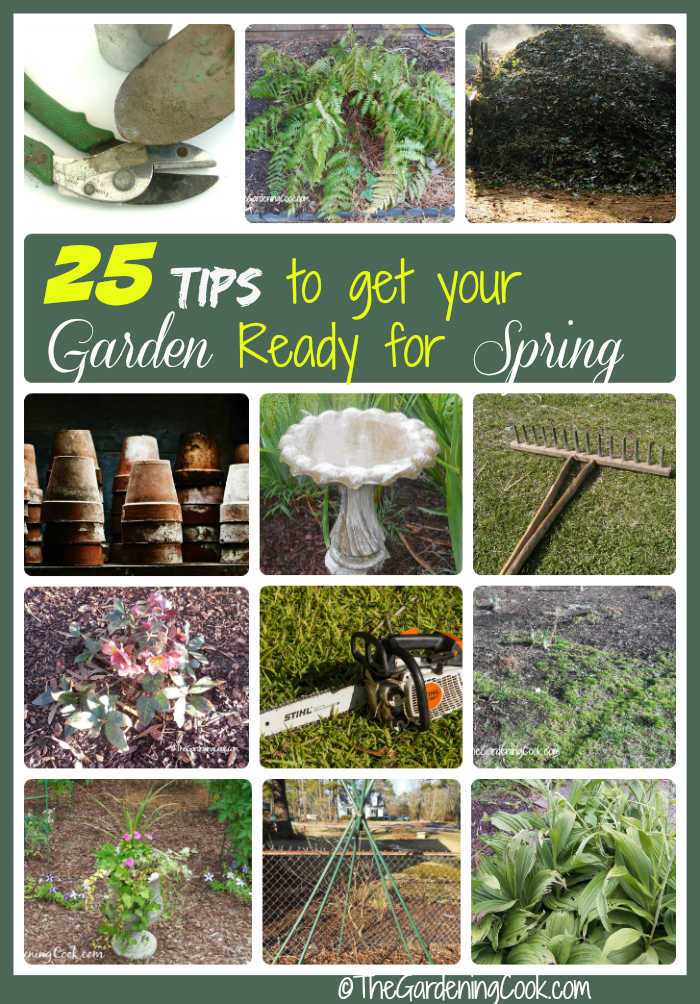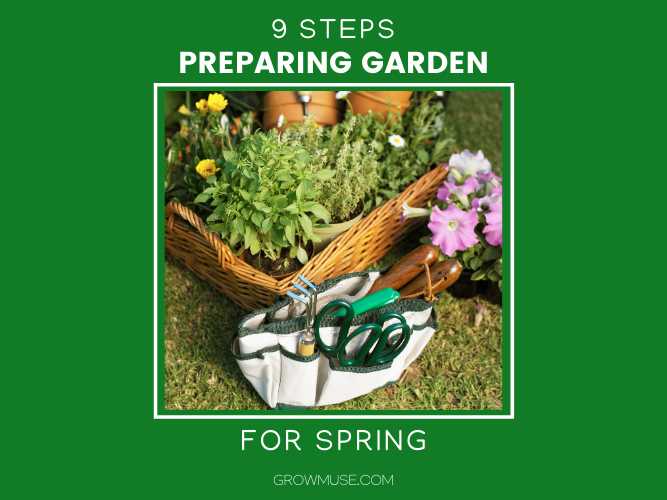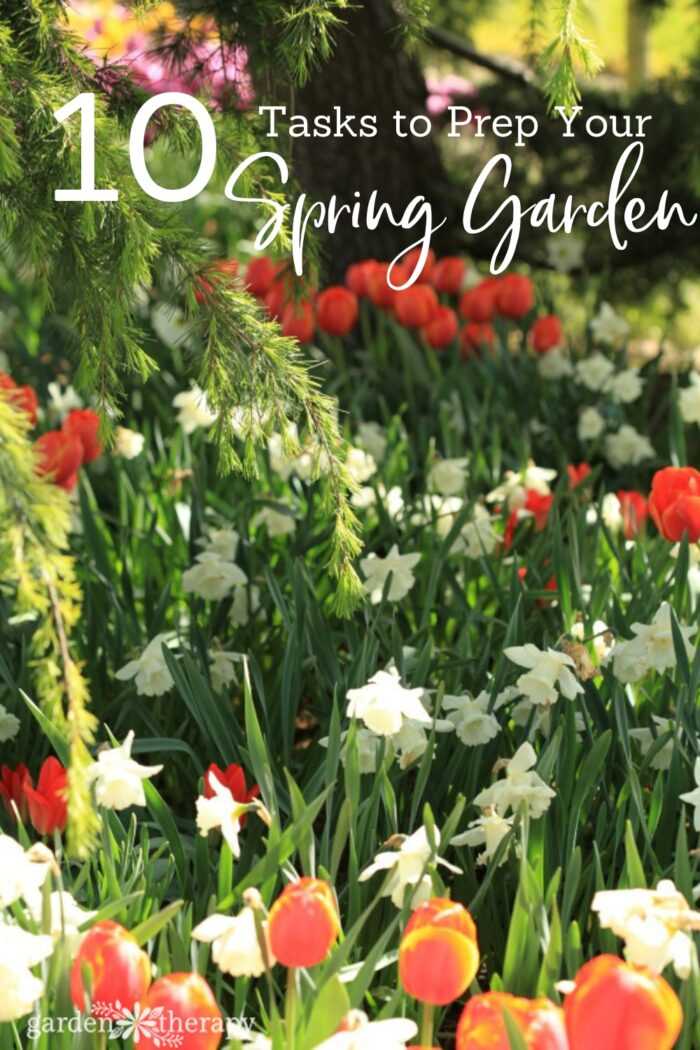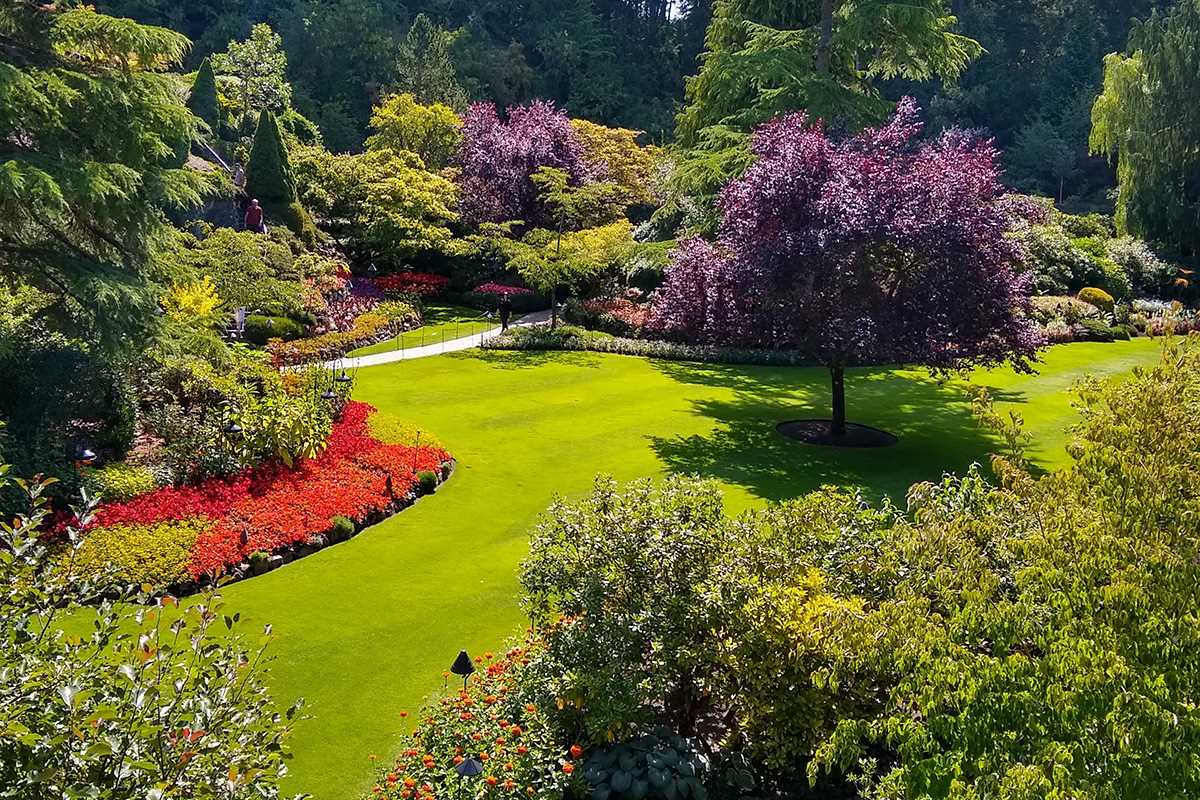- Soil Preparation for Spring Planting
- 1. Clear the Area
- 2. Test the Soil
- 3. Amend the Soil
- 4. Mulch the Soil
- Choosing the Right Seeds and Plants
- Consider Your Climate
- Evaluate Your Soil Type
- Know Your Sun and Shade Conditions
- Consider Your Personal Preferences
- Watering Techniques for a Healthy Garden
- Pest Control and Prevention Methods
- 1. Identify and Monitor Pests
- 2. Integrated Pest Management
- 3. Natural and Organic Pest Control
- 4. Proper Sanitation Practices
- Conclusion
- Fertilizing Options for Optimal Plant Growth
- 1. Organic Fertilizers
- 2. Synthetic Fertilizers
- 3. Slow-Release Fertilizers
- 4. Foliar Fertilizers
- Pruning and Trimming for a Neat Garden Appearance
- 1. Know the Right Time
- 2. Use the Right Tools
- 3. Remove Dead or Diseased Branches
- 4. Maintain Shape and Size
- 5. Pruning Timing for Flowering Plants
- 6. Clean Up and Maintain
- Weed Management Strategies for a Weed-Free Garden
- 1. Mulching
- 2. Hand Pulling
- 3. Herbicides
- 4. Regular Maintenance
- Mulching Benefits and Techniques
- 1. Weed Control
- 2. Moisture Retention
- 3. Temperature Regulation
- 4. Nutrient Enrichment
- Mulching Techniques
- 1. Prepare the Soil
- 2. Apply a Layer of Mulch
- 3. Replenish Mulch Regularly
- 4. Choose the Right Mulch
- Questions and Answers:
- What are the four essential steps for spring garden treatment?
- How do I clean and weed my garden in the spring?
- What should I do to prepare the soil for spring planting?
- What are some tips for effective planting in the spring?
- Why is mulching important for a spring garden?
- What materials can I use for mulching my spring garden?
- Videos: Plan Your 2023 Garden in 10 Easy Steps
Spring is a magical time for gardeners. As the weather warms up and plants begin to awaken from their winter slumber, it’s time to get your garden ready for the growing season ahead. Whether you’re a seasoned pro or a beginner, taking the right steps in spring can set the tone for a successful garden all year long.
In this article, we’ll walk you through four essential steps for spring garden treatment, perfect for beginners:
- Preparing the soil: Before planting anything new, it’s crucial to prepare your soil. Remove any weeds, loosen the soil with a garden fork, and add compost or organic matter to improve its fertility. This will provide a healthy foundation for your plants to thrive.
- Cleaning and pruning: Take some time to clean up your garden by removing any debris and dead leaves. Prune any damaged or diseased branches to promote new growth. This will help prevent the spread of diseases and give your plants a neat and tidy appearance.
- Planting and transplanting: Spring is the perfect time to plant and transplant new flowers, vegetables, and shrubs. Choose plants that are suitable for your climate and consider their sunlight and water requirements. Give them plenty of space to grow and be sure to water regularly.
- Implementing pest control measures: As the weather warms up, pests can become more active in your garden. Use organic pest control methods such as companion planting, beneficial insects, and homemade sprays to keep pests at bay. Regularly inspect your plants for signs of damage and take action if necessary.
By following these four essential steps, you’ll be well on your way to creating a thriving spring garden. Don’t be afraid to experiment and learn along the way. Gardening is a journey, and each season brings new opportunities and challenges.
“The glory of gardening: hands in the dirt, head in the sun, heart with nature. To nurture a garden is to feed not just the body, but the soul.” – Alfred Austin
So roll up your sleeves, grab your gardening tools, and enjoy the rejuvenating beauty of the spring season in your very own garden.
Soil Preparation for Spring Planting
Preparing your soil before spring planting is essential for creating a healthy and thriving garden. By taking the time to properly care for your soil, you can ensure that your plants have the best possible start. Here are four essential steps to prepare your soil for spring planting:
1. Clear the Area
Before you begin preparing the soil, remove any weeds, rocks, or debris from the area where you plan to plant. This will create a clean and clear space for your plants to grow.
- Remove any weeds by hand or using a garden hoe.
- Pull out any rocks or large stones from the soil.
- Clean up any debris, such as fallen leaves or branches.
2. Test the Soil
Testing your soil is an important step in understanding its composition and nutrient levels. There are various testing kits available at garden centers that can determine the pH level and nutrient content of your soil.
- Follow the instructions on the testing kit to collect a soil sample.
- Send the sample to a laboratory or use the testing kit to analyze it yourself.
- Based on the results, you can adjust the soil’s pH level and add any necessary nutrients.
3. Amend the Soil
Once you have tested your soil, you may need to amend it to improve its fertility and structure. This can include adding organic matter, such as compost, and adjusting the pH level if necessary.
- Spread a layer of compost over the soil and mix it in using a garden fork or tiller.
- If the pH level is too high or too low, add lime or sulfur to adjust it accordingly.
- Consider adding other amendments, such as peat moss or aged manure, to improve soil structure.
4. Mulch the Soil
Mulching is an important step in soil preparation as it helps retain moisture, suppress weeds, and regulate soil temperature. Choose an organic mulch, such as wood chips or straw, and spread it evenly over the soil surface.
- Apply a layer of mulch that is 2-3 inches thick.
- Avoid piling mulch directly against the stems or trunks of plants.
- Reapply mulch as needed throughout the growing season.
By following these four essential steps of soil preparation, you will create an optimal environment for your plants to grow and thrive. Remember to regularly monitor and care for your soil throughout the growing season to ensure the continued health and productivity of your garden.
Choosing the Right Seeds and Plants
When it comes to starting your spring garden, one of the most important decisions you will make is choosing the right seeds and plants. The success of your garden depends heavily on selecting varieties that are suited to your climate, soil type, and personal preferences. Here are some essential tips to help you make the best choices:
Consider Your Climate

The first step in choosing the right seeds and plants is to consider your climate. Different plants have different temperature and weather requirements, so it’s important to select varieties that can thrive in your specific region. Consult a hardiness zone map to determine which plants are best suited for your area.
Evaluate Your Soil Type
Another crucial factor to consider is your soil type. Some plants prefer well-draining sandy soil, while others thrive in rich, loamy soil. Conduct a soil test to determine the pH level and nutrient content of your soil. This will help you select plants that can grow well in your garden’s specific soil conditions.
Know Your Sun and Shade Conditions
Understanding the sun and shade conditions in your garden is essential for choosing the right seeds and plants. Some plants require full sun, while others can tolerate partial shade or even thrive in full shade. Observe the amount of sunlight your garden receives throughout the day and choose plant varieties accordingly.
Consider Your Personal Preferences
While considering climate, soil, and sunlight requirements is important, don’t forget to choose varieties that align with your personal preferences. Think about the types of vegetables, flowers, or herbs you enjoy and prioritize those in your selection process. Remember, gardening should be a pleasurable and rewarding experience!
By carefully considering your climate, soil type, sunlight conditions, and personal preferences, you can choose the right seeds and plants for your spring garden. This will set the stage for a successful and enjoyable gardening season!
Watering Techniques for a Healthy Garden
Watering your garden properly is crucial for the health and vitality of your plants. Here are some watering techniques to help you maintain a healthy garden:
- Water deeply and infrequently: Instead of watering lightly every day, it’s better to water deeply and less frequently. This encourages plants to develop deep root systems, making them more resilient during periods of drought.
- Water in the morning: Watering your garden in the morning allows the plants to take up the water before the heat of the day evaporates it. It also helps prevent the growth of certain plant diseases that thrive in moisture.
- Use a soaker hose or drip irrigation: These irrigation methods are efficient ways to deliver water directly to the roots of plants without wasting water through evaporation or runoff.
- Monitor soil moisture: Check the moisture level of your soil regularly to ensure it’s neither too dry nor too wet. Stick your finger about an inch into the soil, and if it feels dry, it’s time to water. If it feels wet, hold off on watering for a few days.
Remember, different plants have different watering needs, so it’s important to understand the specific requirements of each plant in your garden. By following these watering techniques and adjusting them as necessary, you’ll be on your way to maintaining a healthy and thriving garden.
Pest Control and Prevention Methods
1. Identify and Monitor Pests
To effectively control pests in your spring garden, it’s important to first identify and monitor them. Keep an eye out for signs of pests such as chewed leaves, sticky residue, or holes in plant stems. By regularly inspecting your plants, you can catch pest problems early on and take action before they cause significant damage.
2. Integrated Pest Management
Integrated Pest Management (IPM) is a holistic approach to managing pests that involves a combination of techniques. Instead of relying solely on pesticides, IPM focuses on prevention, monitoring, and using a variety of pest control methods. This can include cultural practices like crop rotation, physical and mechanical controls like handpicking pests, and biological controls like introducing beneficial insects.
3. Natural and Organic Pest Control
Consider using natural and organic pest control methods in your spring garden. These methods are safer for the environment, beneficial insects, and your own health. Some examples of natural pest control include using insecticidal soaps, neem oil, diatomaceous earth, and companion planting. These methods can help deter pests and reduce the need for harsh chemicals.
4. Proper Sanitation Practices
Maintaining proper sanitation practices in your garden can help prevent pest infestations. Remove any dead or diseased plant material promptly, as these can attract pests. Also, practice good weed control as weeds can serve as a hiding place for pests. By keeping your garden clean and tidy, you can reduce the likelihood of pest problems.
Conclusion
By following these pest control and prevention methods, you can maintain a healthy and thriving spring garden. Remember to regularly monitor your plants, utilize integrated pest management techniques, consider natural and organic pest control methods, and practice proper sanitation. With these steps in place, you can minimize the impact of pests on your garden and enjoy a beautiful and productive growing season.
Fertilizing Options for Optimal Plant Growth
1. Organic Fertilizers
Using organic fertilizers is a popular choice for many gardeners. These fertilizers are derived from natural sources, such as compost, manure, bone meal, and fish emulsion.
Organic fertilizers provide a slow release of nutrients, which promotes healthy soil and long-term plant growth. They also improve soil structure and increase the soil’s ability to retain moisture.
However, the nutrient content of organic fertilizers can vary, so it’s important to read the label and follow the instructions for proper application.
2. Synthetic Fertilizers
Synthetic fertilizers are chemical-based fertilizers that are formulated to provide specific nutrient ratios. They are generally fast-acting and provide quick results.
These fertilizers are available in granular, liquid, and soluble forms. Granular fertilizers can be spread evenly over the soil surface, while liquid and soluble fertilizers can be applied directly to the plant roots or foliage.
It’s crucial to follow the manufacturer’s recommendations and avoid over-application, as excessive use of synthetic fertilizers can harm plants and contribute to water pollution.
3. Slow-Release Fertilizers
Slow-release fertilizers are designed to provide a steady supply of nutrients to plants over an extended period. They come in various forms, including organic and synthetic options.
These fertilizers are ideal for busy gardeners who may not have time for frequent applications. They are typically applied at the beginning of the growing season and last for several months.
Slow-release fertilizers release nutrients gradually, reducing the risk of nutrient leaching and ensuring plants receive a continuous supply of essential elements.
4. Foliar Fertilizers
Foliar fertilizers are applied directly to plant leaves. They are absorbed through the foliage and provide immediate nutrient uptake.
These fertilizers are often used to address specific nutrient deficiencies or to boost plant health during critical growth stages. They can be applied using a sprayer, ensuring thorough coverage of the leaves.
Foliar fertilizers are not a substitute for soil fertilization but can complement regular fertilizer applications. Care must be taken to apply foliar fertilizers during cool, calm weather to avoid leaf burn.
Choosing the right fertilizer for your garden depends on your plants’ specific needs, soil conditions, and personal preferences. It’s recommended to perform soil tests to determine nutrient deficiencies and adjust your fertilization regimen accordingly.
Pruning and Trimming for a Neat Garden Appearance
Pruning and trimming are essential steps in maintaining a neat and well-kept garden. They help promote healthy growth, improve the overall appearance of the plants, and prevent overgrowth. Here are some tips for beginners to effectively prune and trim their garden:
1. Know the Right Time
It’s important to prune and trim your plants at the appropriate time. Different plants have different pruning requirements, so make sure to research the specific needs of each plant in your garden. Generally, early spring or late winter is a good time to prune most plants before new growth starts.
2. Use the Right Tools

Invest in high-quality pruning tools to ensure clean and precise cuts. Tools like pruning shears, loppers, and hedge trimmers are commonly used for different types of plants. Make sure to keep your tools clean and sharp to avoid any damage to the plants.
3. Remove Dead or Diseased Branches
Start by removing any dead or diseased branches from your plants. These branches not only affect the overall appearance of your garden but also rob the healthy parts of the plant of essential nutrients. Removing them will help promote healthy growth and prevent the spread of diseases.
4. Maintain Shape and Size
Regular trimming helps maintain the shape and size of your plants. Trim back any overgrown branches or stems, keeping in mind the natural form of the plant. This will not only improve the aesthetic appeal of your garden but also prevent the plants from becoming too large and overwhelming other nearby plants.
5. Pruning Timing for Flowering Plants
If you have flowering plants in your garden, it’s important to prune them at the right time to avoid removing potential flowers. Research the specific timing for each type of flowering plant, as some bloom on new growth while others bloom on old growth. Prune accordingly to maximize the bloom and maintain a tidy appearance.
6. Clean Up and Maintain
After pruning and trimming, make sure to clean up any debris and properly dispose of the pruned branches and stems. Regular maintenance and cleanup will help keep your garden looking neat and organized throughout the year.
By following these pruning and trimming tips, you can achieve a neat and well-maintained garden that will be the envy of your neighbors. Don’t be afraid to start pruning and trimming your plants, and remember that practice makes perfect!
Weed Management Strategies for a Weed-Free Garden
Keeping your garden free from weeds is an important part of maintaining a healthy and attractive outdoor space. By implementing effective weed management strategies, you can ensure that your plants have the best chance to grow and thrive. Here are some essential tips to help you maintain a weed-free garden:
1. Mulching
One of the most effective ways to prevent weeds from taking over your garden is by using mulch. Apply a layer of organic mulch around your plants to suppress weed growth and conserve moisture in the soil. Mulch also adds nutrients to the soil as it breaks down over time.
2. Hand Pulling
If you notice weeds popping up in your garden, it’s important to remove them as soon as possible. Hand pulling is often the most effective method for small-scale weed control. Make sure to grasp the weed close to the base and pull firmly to remove the entire plant, including the roots.
3. Herbicides
In cases where hand pulling is not practical or effective, you may consider using herbicides to control weeds. Selective herbicides target specific types of weeds and can be sprayed directly on the plants without harming your desired plants. Non-selective herbicides, on the other hand, kill all vegetation and should be used with caution.
4. Regular Maintenance
Regular maintenance is key to preventing weeds from taking over your garden. Keep your garden beds tidy by removing any debris or fallen leaves. By regularly checking for and removing weeds, you can stop them from spreading and competing with your desired plants for nutrients and sunlight.
By implementing these weed management strategies, you can create a weed-free garden that will not only be visually appealing but also provide ideal growing conditions for your plants. Remember to stay vigilant and address weed growth as soon as possible to prevent them from becoming a major problem in your garden.
Mulching Benefits and Techniques
Mulching is a crucial step in maintaining a healthy and thriving spring garden. It involves covering the soil surface with a layer of organic or inorganic material, such as wood chips, straw, leaves, or plastic. Mulching offers numerous benefits for both plants and gardeners, including:
1. Weed Control
Mulch acts as a physical barrier, preventing weed seeds from reaching the soil surface and germinating. By suppressing weeds, mulching reduces competition for nutrients, water, and sunlight, allowing your plants to grow more efficiently.
2. Moisture Retention

A layer of mulch helps to retain moisture in the soil by reducing evaporation. It acts as a protective blanket, keeping the soil surface cooler and preventing water from quickly evaporating. This is especially important during hot and dry periods, as it helps to maintain soil moisture levels and reduces the need for frequent watering.
3. Temperature Regulation
Mulching also helps to regulate soil temperature, preventing extreme fluctuations that can stress plants. In spring, mulch acts as insulation, keeping the soil warmer during cool nights and early mornings. In summer, it provides shade and helps to keep the soil cooler.
4. Nutrient Enrichment
Organic mulches, such as compost or decomposing leaves, gradually break down and release nutrients into the soil. This natural process improves soil fertility over time, providing a steady supply of essential nutrients for your plants.
Mulching Techniques
To properly mulch your spring garden, follow these steps:
1. Prepare the Soil

Before mulching, remove any existing weeds or debris from the soil surface. Loosen the soil using a garden fork or tiller to improve water drainage.
2. Apply a Layer of Mulch
Spread a layer of mulch around your plants, ensuring a depth of 2-4 inches. Avoid piling mulch directly against the stems or trunks of plants, as this can create a damp environment and promote rot.
3. Replenish Mulch Regularly
Mulch will gradually break down over time, so it’s important to replenish it annually. Add a fresh layer of mulch each spring to maintain its benefits and appearance.
4. Choose the Right Mulch
Consider the specific needs of your plants when selecting a mulch. Organic mulches are recommended for most garden beds, as they improve soil quality. However, inorganic mulches like plastic sheeting or stones may be more suitable for certain situations, such as in vegetable gardens or around trees.
By implementing mulching techniques and understanding the benefits it provides, you can create an optimal environment for your spring garden to flourish.
Questions and Answers:
What are the four essential steps for spring garden treatment?
The four essential steps for spring garden treatment are: cleaning and weeding, preparing the soil, planting, and mulching.
How do I clean and weed my garden in the spring?
To clean and weed your garden in the spring, start by removing any debris such as fallen leaves and dead plants. Then, use a garden fork or trowel to carefully remove any weeds, making sure to extract the roots to prevent regrowth.
What should I do to prepare the soil for spring planting?
To prepare the soil for spring planting, begin by loosening it with a garden fork or tiller. Then, add organic matter such as compost or aged manure to improve its fertility and drainage. Finally, smooth the soil’s surface using a rake.
What are some tips for effective planting in the spring?
For effective planting in the spring, choose a sunny spot in your garden that is appropriate for the plants you want to grow. Make sure to follow the recommended spacing and depth for each plant. Water them thoroughly after planting and provide the necessary support or trellis if needed.
Why is mulching important for a spring garden?
Mulching is important for a spring garden because it helps to retain moisture in the soil, suppresses weed growth, and regulates soil temperature. It also adds organic matter to the soil as the mulch breaks down over time.
What materials can I use for mulching my spring garden?
There are several materials you can use for mulching your spring garden, including organic mulches such as straw, wood chips, and shredded leaves. You can also use inorganic mulches like landscape fabric or plastic sheeting. Choose a mulch that suits your garden’s needs and aesthetics.







